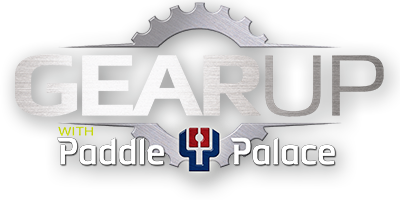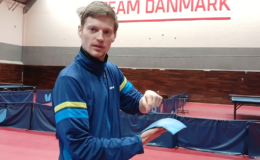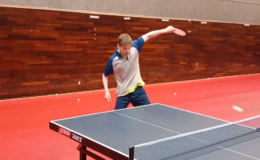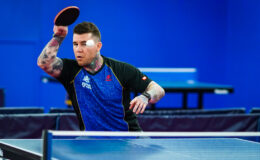By Larry Hodges, USATT Hall of Famer and National Coach
At the highest levels, many top players don’t even bother to smash – even if the ball is eye-level high, they loop. However, for most players, a smash is a must. Here are some keys to developing a good smash, forehand or backhand.
First, get some coaching or watch the top players. Here’s a tutorial from PingSkills (3:58) on the forehand smash, and here’s Tahl Leibovitz demonstrating the backhand smash (1:35). It’s still best to work with a coach who can figure out and fix any flaws in your technique.
Second, practice. Here are two of the best smashing drills.
- Hard-Soft Drill. This really should be called the Hard-Medium Drill. Your partner blocks while you alternate hitting a medium drive and then a smash. As long as you keep the ball to the same spot, your partner should be able to return many of your smashes, with practice. A variation is to hit two medium drives and then a smash. This allows you to focus more on technique with the two drives. You can do this forehand or backhand.
- Loop and smash drill. You serve backspin to your partner’s backhand, your partner pushes it back to the middle of the table, you loop to his backhand, he blocks to your forehand, you smash, then play out the point. The key here is to lower the shoulder for the loop, but keep it up for the smash. After looping, many players drop the shoulder on the next shot, and their smash will almost always go off. (Here’s a short article on the topic.) There are numerous versions of this drill:
- You can start by serving to the backhand, forehand, or middle;
- Your partner can push to any pre-set spot on the table – forehand, backhand, middle, or even add some randomness by having the push go anywhere on the forehand or anywhere on the backhand side.
- You can loop to your partner’s forehand instead of his backhand. But to keep the rally going consistently, your first loop should go to the same spot each time.
- Rather than free play, the smash also goes to the same spot, so your partner has a better chance of returning it, and so you have longer rallies.
- Your partner blocks to another place on the table, and you move there to smash.
- You can do this drill on the backhand side, with a backhand loop followed by a backhand smash, both from the backhand side.
Third, use the smash in games. If you don’t, you won’t learn to use the shot in a real match. Find ways to set it up, with serves, loops, aggressive backhands, etc. Once you have a good smash, it’ll not only allow you to end the point quickly when given the chance, but it’ll be one more thing your opponent has to guard against – and most players aren’t going to return a good smash.



